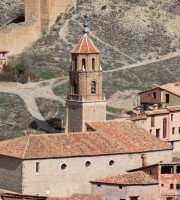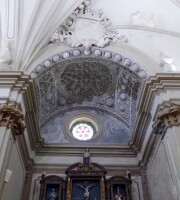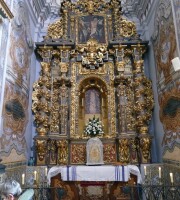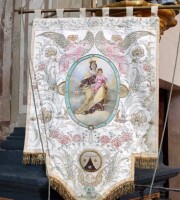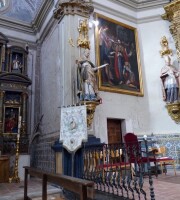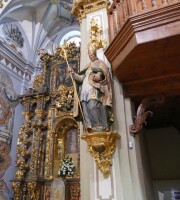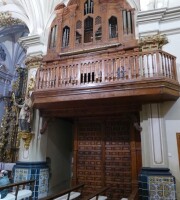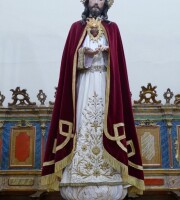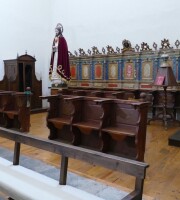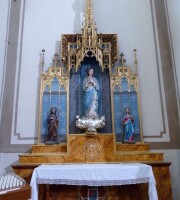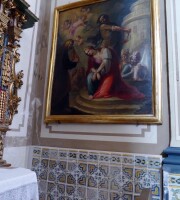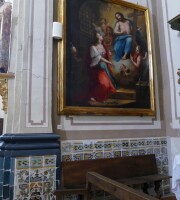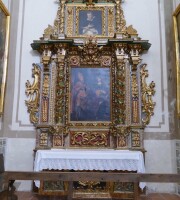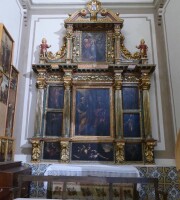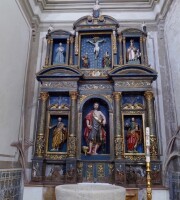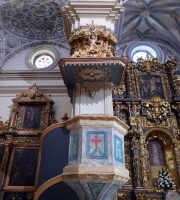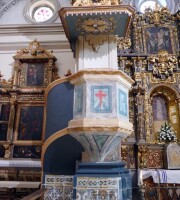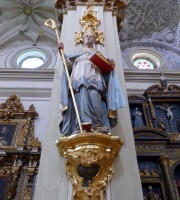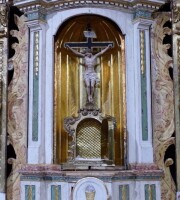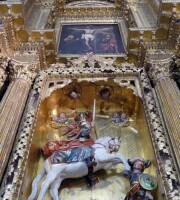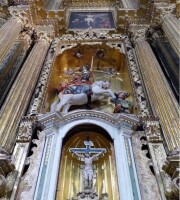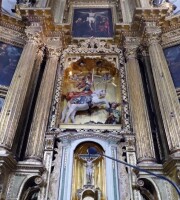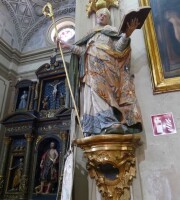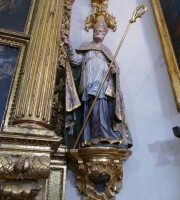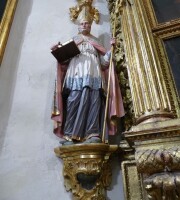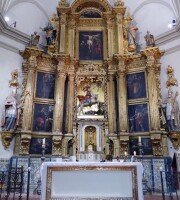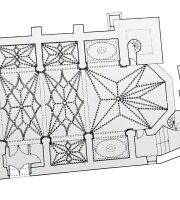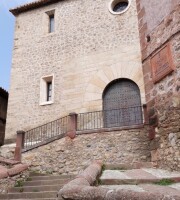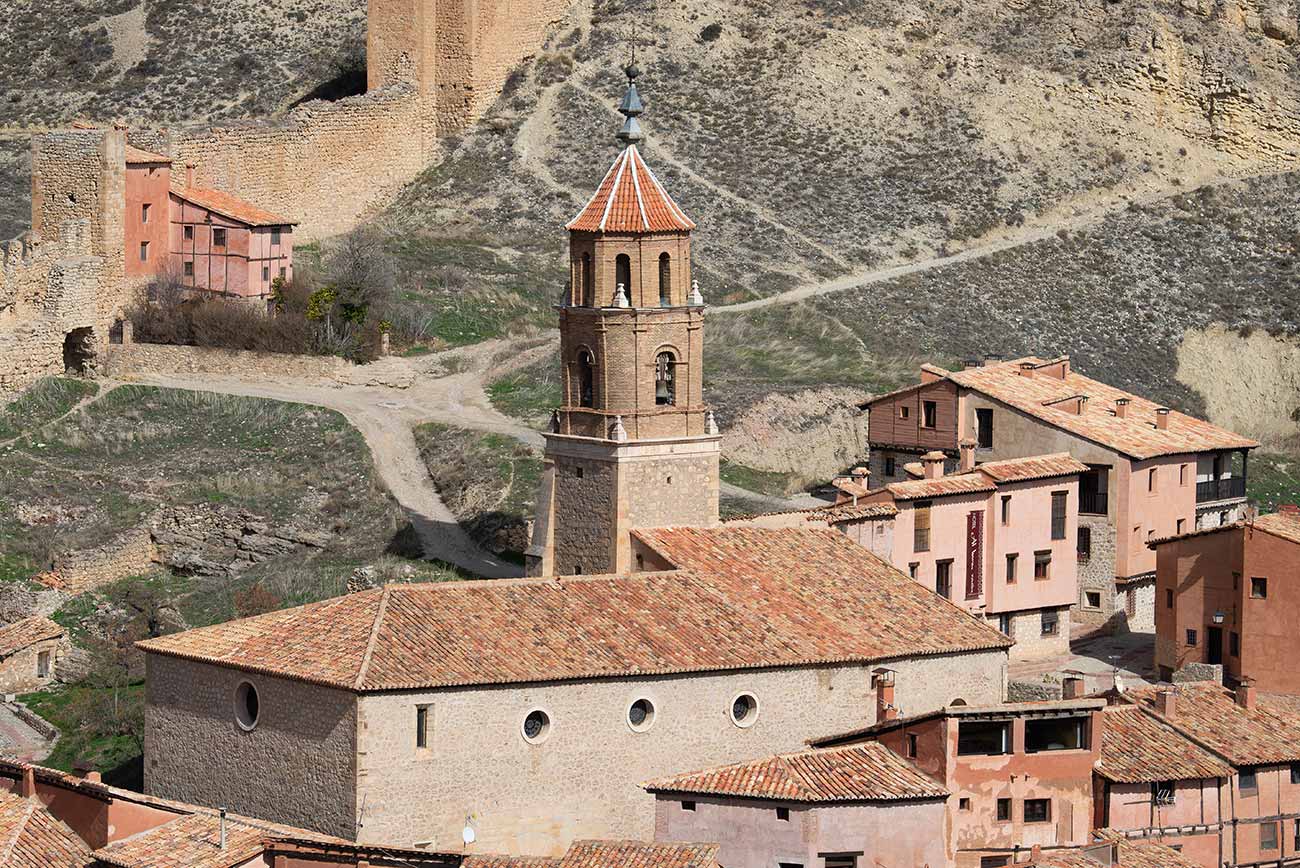Church of Santiago
In the vicinity of the Plaza Mayor square and next to Calle Portal de Molina, there are some steps leading to a small square where the Church of Santiago emerges with the old Santiago parish house adjoining it – today converted into a hotel. We don’t know its origin, but there is evidence that suggests that this church was built on the site of an old neighbourhood mosque (oratory or masyid) and was linked to the religious and military order of Santiago, which was highly important in medieval Albarracín.
We know that the restoration of the present Church of Santiago was started at the beginning of the 17th century by the architect and master mason Alonso del Barrio de Ajo, who took charge of the work of the Dominican convent in 1599, date on which he was erecting the tower of Santiago and finishing the Cathedral tower, as well as the so-called ‘Rodilla’ bridge (which was built by this master mason and not during the Roman period, as is popularly believed).
The Church of Santiago was completed according to the initial project of Alonso Barrio de Ajo, comprising ‘a spacious nave divided into rectangular sections, with chapels housed between the buttresses and polygonal chancel, all covered with star-shaped vaults, with the exception of the first two, which have barrel vaults.’
The bell tower was also built by Alonso Barrio de Ajo. During the reform of 1726, two brick bodies were added, enhancing its shape in the Albarracín skyline. This required the walling up of its side windows and removing the last body of the octagonal footprint. As for its exterior, it is presented as a volume of smooth walls, with some interesting portholes and buttresses of no artistic value.
As regards the artistic quality of the interior of the church, worthy of note is the first chapel on the side of the Epistle or the chapel of San Pedro and San Andrés. The Renaissance altarpiece of San Sebastian, which occupies the left side of this chapel, is of the greatest quality and artistic interest. It is composed of three aisles: in the centre is San Sebastian and above him is a Baroque canvas dedicated to the Virgin, which is topped by a medieval-style Holy Trinity. San Roque appears on the left aisle and San Blas on the right; together with San Sebastian, they protect against plague and other contagious diseases.
The main 17th-century altarpiece consists of two sections and three aisles, plus the top piece. The iconographic programme is articulated around the relief of Santiago (18th century) under the denomination of ‘Matamoros’ (Saint James the Moor-slayer), a Spanish evangelising apostle. Other 17th-century works include the altarpieces of La Dolorosa, La Sagrada Familia and La Santísima Trinidad, as well as the carving of La Virgin del Rosario.
At the same time, the visitor is drawn to the life-size 18th-century statues located on the fronts of the pilasters, which reference the Seven Apostolic Men, or which are also called the Siete Convertidos por Santiago (seven men converted by Santiago). They are supported in corbels, crowned with wooden canopies and their names and positions appear on the stands.
A final note: the parish church of Santiago was one of the three churches in the City providing pastoral care to the parishioners of this neighbourhood until a Decree was issued by the Ministry of Grace and Justice on 30 April 1842, at the request of the diocesan of Albarracín, which unified the parishes of Santiago and Santa Maria, leaving a curate in the chapel of Santa Barbara (under the authority of Santiago), making it the parish of both the Santiago neighbourhood and of El Arrabal.
